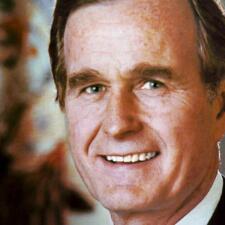[Video will be published soon.]
As the debate over tariffs heats up, particularly with the recent announcement of the U.S.’s new tariff plan on April 2, 2025, many of us regular consumers are left wondering what this means for our wallets and the broader economy. I’m not an economist, so I’m approaching this topic from the perspective of someone trying to make sense of complex economic policies without a PhD in finance. My goal is to break down the implications of these tariffs, drawing on insights from experts across the spectrum, to understand whether this move is a stroke of genius or a risky gamble that could echo the economic turmoil of the 1930s Great Depression. Let’s dive into the details, explore the arguments, and consider the bigger picture behind this policy.
The new tariff plan, outlined by the U.S. Trade Representative, introduces reciprocal tariffs aimed at leveling the playing field with countries like China, Canada, and the European Union. Dubbed “Liberation Day” by some, as reported by NPR, the policy was unveiled in a Rose Garden press briefing where former President Donald Trump showcased a chart detailing tariffs imposed on various nations. This visual, shared by Bloomberg TV, underscores the scale of the policy—a bold strategy to protect domestic industries and renegotiate trade deals. But the question looms: is this a wise decision, or are we flirting with economic disaster?
To unpack this, let’s start with the basics. Tariffs are taxes on imported goods, and reciprocal tariffs are a tit-for-tat response where one country matches another’s tariffs. For example, if the U.S. slaps a 20% tariff on steel from Canada, Canada might counter with a 25% tariff on U.S. electronics. The goal is to protect local industries, encourage fairer trade agreements, and give domestic producers a fighting chance. However, the downside is real—escalating tariffs can reduce trade, raise consumer prices, and spark retaliatory measures that spiral into trade wars. A YouTube explainer by StandupMaths, dubbed the “Trump Tariff Equation,” highlights how terms like “deficit” and “surplus” aren’t inherently good or bad, but can be dressed up with “mathiness”—complex mathematics that may obscure the true impact of a policy. This suggests we need to look beyond the numbers to the real-world effects.
Money itself is at the heart of this discussion. It’s not just coins and bills—it’s a medium of exchange, a unit of account, a store of value, and a standardized measure for transactions. In a healthy economy, money should facilitate trade, provide stability, and be widely trusted. Yet, as depicted in The Big Short, money can be manipulated by governments, banks, and elites, leading to inflation, inequality, or debt-driven instability. Understanding this helps frame why tariffs matter—they’re not just about trade but about how money flows through society. The 2008 financial crisis showed what happens when money becomes an end rather than a means, and tariffs could either stabilize or disrupt that flow.
Critics of the tariff plan are vocal and varied. Mainstream media outlets like CNN and MSNBC, often aligned with Democratic viewpoints, predictably oppose Trump’s policies, much like their coverage of his every move. It’s almost as routine as SNL’s Trump skits, influenced by groups like the Council of Foreign Relations. But the skepticism isn’t limited to the left. Conservative economist Thomas Sowell, in his book Basic Economics, warns that tariffs can harm consumers by raising prices. Milton Friedman, in Capitalism and Freedom, echoed similar concerns, arguing that free trade benefits economies more than protectionism. Even within Trump’s camp, figures like Ben Shapiro and Senator Rand Paul express worries about the consumer impact, as seen in posts on X. The fear is that higher tariffs could increase costs for everyday goods, hitting the middle and lower classes hardest.
On the flip side, supporters argue that tariffs are a strategic tool to restore America’s economic dominance. Fox News featured Stephen Miller, Trump’s former Deputy Chief of Staff, explaining that tariffs aim to protect American jobs and pressure other nations into fairer trade deals. Scott Bessent, the current Treasury Secretary, also backs the plan, as noted in an X post. Trump himself has tied tariffs to a bold vision: eliminating the federal income tax, introduced in 1913 alongside the Federal Reserve. In a clip from 1988, shared on X, Trump discussed tariffs long before his presidency, suggesting a consistent belief in their power to empower citizens by reducing reliance on income tax. This could put more money back in people’s pockets, a move many see as a win for individual freedom.
The tariff debate ties into a deeper history of America’s financial system, particularly the Federal Reserve’s creation in 1913. A 1910 meeting on Jekyll Island, Georgia, brought together powerhouses like Senator Nelson Aldrich, J.P. Morgan’s Henry P. Davison, and banker Paul Warburg to design the Fed. This secretive gathering, as discussed by Eustace Mullins in a YouTube presentation, laid the groundwork for a privately owned central banking system that can print money, charge interest, and operate independently of public control. Mullins argues this system creates inflation—a hidden tax on citizens—through mechanisms like elastic currency and fractional reserve banking. He even ties the 1912 Titanic sinking to this history, noting that opponents of the Fed, like John Jacob Astor IV and Benjamin Guggenheim, died on the ship, while J.P. Morgan, who funded it, canceled his ticket last minute. This theory, explored in an article by World Reports Today, adds a layer of intrigue to the tariff debate.
Mullins’ presentation also questions why institutions like the Hoover Institute avoid these topics, suggesting they’re complicit in a system that obscures who controls the money supply. He points to the Federal Open Market Committee’s ability to influence stock markets and raises concerns about taxpayer money funding controversial causes. Scott Bessent’s ties to the Rockefeller family, noted in an X post, further connect modern policy to historical power structures, raising questions about whose interests are being served.
Zooming out, the tariff debate is part of a larger struggle: centralized power versus national sovereignty. Books like F.A. Hayek’s The Road to Serfdom and Milton Friedman’s Capitalism and Freedom warn against collectivism and centralized control, themes echoed in Trump’s push to reduce the income tax and resist central bank digital currencies (CBDCs). Unlike CBDCs, which could give elites more control over citizens, tariffs might empower individuals by reducing government reliance on income tax. Supporters argue that a prosperous America, as envisioned by initiatives like DOGE led by Elon Musk, could counter a New World Order agenda driven by financial elites.
But the critics’ warnings linger—could tariffs trigger a global economic downturn? Or will markets adjust, leading to a stronger America? Interestingly, figures like Nancy Pelosi and Ursula von der Leyen have supported similar tariff measures, as seen in X posts, suggesting the policy’s merits might depend on who’s implementing it. This raises a key question: does the messenger matter more than the policy itself?
Looking forward, there’s speculation that the U.S. military, which helped develop the internet through ARPANET, might be laying the groundwork for a new economic system. Marina Jacobi, in a Rumble episode from May 2023, discusses a blockchain-based monetary system that could bypass elite control. She explores technologies like Rust and Ethereum, suggesting a decentralized future. While some dismiss these ideas as QAnon conspiracies, the military’s role in innovation can’t be ignored. Just as ARPANET paved the way for the internet, similar efforts might reshape global finance, with America leading the charge.
In conclusion, Trump’s tariffs are more than a trade policy—they’re a flashpoint in a broader battle over economic freedom, national sovereignty, and the role of money in society. While critics fear higher prices and global instability, supporters see a path to reducing taxes and empowering citizens. The truth likely lies in the messy middle, shaped by historical forces and modern power dynamics. What do you think—will tariffs usher in prosperity or peril? Share your thoughts below, and let’s keep the conversation going.





